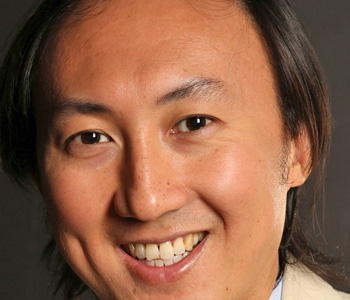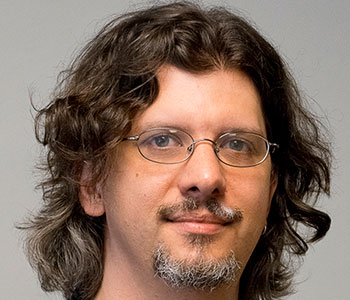Christopher Rea
The Age of Irreverence: A New History of Laughter in China
University of California Press
352 pages, 6 x 9 inches
9780520283848
The early twentieth century changed the ways people in China talked about what’s funny. The Age of Irreverence is about how and why.
Part of the focus is historical: What changed? How did Chinese humor become modern? This thread of the story traces the effects of forces like urban migration, an expanding popular press, translation of foreign works, political instability, and the advent of forms like cartoons and cinema. Shanghai became an industrial hub, drawing internal migrants, fueling advertising, and, before long, giving rise to a farcical sensibility focused on hoaxes, get-rich-quick schemes, and media swindles. Stage comedians pooled their resources to buy a second-hand movie camera and produce slapstick shorts. Amusement halls popped up in major cities, drawing in the man on the street with an attraction imported from the Netherlands: the ha-ha (or funhouse) mirror. We find plenty of changes like these in the quantity, quality, and expressions of Chinese humor.
Then there’s the inverse question: How did humor change modern China? Jokes sold newspapers. Public ridicule caused celebrities and politicians to change their behavior. A vogue for “humor literature” in the 1930s generated a crop of humorists or, in the words of one skeptic, “multiplied the number of clowns playing with brush and ink.” Satirists unwittingly supplied caricaturing techniques and categorical logic to later political campaigns of the Mao era.
Underlying all of this is my interest in language. The early twentieth century was China’s vernacular moment, when using classical Chinese gave way to writing as one spoke. The resulting chaos and democratization of discourse were both a boon to humorists of all stripes. The period I focus on—roughly the 1890s to the 1930s—saw the emergence of a variety of comic cultures; I focus on five, each symbolized by a particular term for humor used in China at that time. I argue that amidst the trauma and unruliness, a spirit of irreverence—meaning an insouciant attitude toward convention and authority—helped to usher China into the modern age. And I explain why it matters that one term, youmo, came to symbolize the new gold standard for humor.
E.B. White said that “humorists fatten on trouble,” and in modern China there’s been plenty of that to go around. One of the broad concerns of my book is to identify conditions that nourish certain cultures of mirth or amusement. Incompetent political leaders and social turmoil both help. So does a rambunctious, unevenly-regulated mass media.
A more specific concern has to do with intonation. My book doesn’t get up to the television age, but try comparing prime time pap with the anything-goes humor of cable—the style is partially a function of the venue. Jokes in Chinese tabloids tended to be edgier than in government mouthpieces. Another analogy: the internet and the availability of Photoshop software create ripe conditions for parodists, since it’s easy to share and manipulate texts; the periodical boom in early twentieth-century China created similar conditions, since it was suddenly cheaper to do cut-and-paste comedy.
Think, too, of what happens when mockery becomes a spectator sport—as with YouTube comments, Facebook trolls, or American presidential elections. When Chinese literati started publishing open letters to each other in magazines, a type of one-upmanship set in for who can come up with the most hilarious insult. One writer during the “warlord period” even published a parodic manifesto called The Fine Art of Reviling.
Another basic question that crops up in the book is how useful it is to use humor to take the measure of a people or to draw conclusions about how they think. Witty French. Humorous Brits. Self-deprecating Jews. Outgoing Americans. Early twentieth-century Chinese writers—and I do deal mostly with literate folks, since there’s more material by them—started to theorize humor in relative terms, sometimes resorting to stereotypical characterizations like these. Then, in the 1930s, many of the discussion of humor became self-searching: What is our sense of humor? What should it be?
It’s commonplace to say that humor is subjective, since what’s funny to you might not be funny to me. But humor is also a loaded concept. If you—or your people—have no sense of humor, or the wrong one, that means you’re less rational, tolerant, understanding, or civilized. You don’t get it. Or, worse, you lack something human. Modern Chinese debates about humor were very much caught up with these fundamental questions of value.
The Chinese press dubbed 1933 the “Year of Humor.” The catalyst was the Analects Fortnightly, a new magazine inspired by The New Yorker and other contemporaries, which since its launch in 1932 had sparked a craze for youmo (humor). This moment has long been the most famous one in the modern history of Chinese comedy because it established youmo as the word in Chinese for humor. I delve into the process behind this change in terminology and point out one of its consequences: the advent of this transliteration rendered most pre-existing indigenous terms for humor suddenly archaic. It was, among other things, a moment of erasure.
The Analects set out to change the tone of public discourse, which its editors thought had become frivolous or abusive. Many A-list writers joined the cause. Some dabbled in humor, but others reinvented themselves as humorists. Humor was, to them, not just a style but a way of being. To be humorous was to embrace the Doctrine of the Mean—to be moderate in tone and realistic in what one expected of life. Instead of wallowing in self-pity about the state of the nation, these humorists projected self-confidence and broad-mindedness, their preferred form being the personal essay. While they criticized China’s follies and outrages, they acknowledged them as being part of the human comedy. This was a campaign of archeologists and cosmopolitans: the Analects writers scoured a vast Chinese literary archive and translated the latest and greatest from abroad. And a couple of them—Lin Yutang and Lao She—even found success in English.
The movement provoked a backlash. Humor was but a plaything of the upper class. It was the product of callous elites insulated from or indifferent to bombs and destitution. Promoting humor in today’s China was something only an out-of-touch hedonist would do, like offering cigarettes to people in need of rice. The humorist lived in a world “as mentally snug as the world of women’s magazines with its cute babies, cozy living rooms, and gleaming refrigerators.” China needed to wake up, but if a little humor could be a stimulant, too much was narcotic. Humor wasn’t just a new form of escapism; it was numbing.
Lin Yutang, who coined the word youmo, said that he had turned to humor out of necessity: he wanted to criticize the powerful without getting shot. (He did have to move house several times.) His broader agenda was to help Chinese people find a new way to appreciate life, beginning with embracing a new way to talk—something between two idioms they already knew too well: the stifling moralizing of “serious-talk” and the triviality of “laugh-talk,” or joking. Youmo was an invention—a brand of humor to serve as a middle way.
This idealized conception of humor endured, as did the word youmo, but the Analects did not. War with Japan, declared in 1937, cut short its life and scattered its contributors. Militant satire and eulogistic comedy in praise of New China became the approved form when the communists took over after 1949.
The laughter of the past can inspire condescension or awe, depending, in part, on whether or not the prejudices it reflects match our own. The challenge for the historian is to avoid letting one’s own sensibilities determine the selection, since just choosing only what you think is funny will result in a picture of what you think should have been rather than what was. Corny jokes and buffoonery might be even more culturally significant than the satire of the dissident on the right side of history.
In any case, we need to get close up. Without a sense of its texture, theories about humor fall flat. That’s one of the things that’s so unsatisfying about the notion of a national sense of humor, which tends to be invoked to satisfy a political agenda. It’s an invention, and a rather reductive one. My book gives a glimpse of just how many different comedic sensibilities coexisted in China in the span of a few decades, and of how varied they were in their influences, drawing on everything from the Confucian canon to Charlie Chaplin. It’s a small part of a big story. There’s plenty more to be said about Chinese contributions to humor as a part of human culture.
Beyond the history and politics, my book is about ways that people can be funny in the Chinese language. It gives room to the joke-crackers, the pun-mongers, and the bomb-droppers. If it has one bias it’s in favoring the humor that can sing in translation. Among the crabs, ghosts, frogs, turtles, and other curiosities, readers should find plenty that strikes a chord.




We don't put paywalls. We don't distract you with ads. We don't sell your data.
Please help to keep this running!